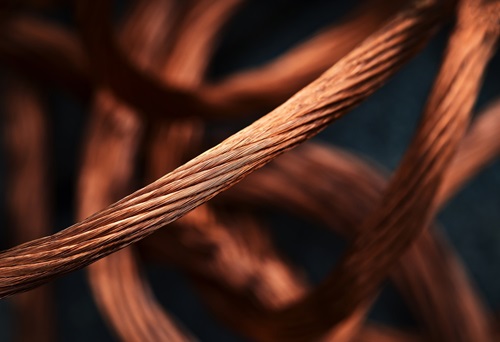
Photo © Andrew Sentipal | Dreamstime.com
File this one under “How low can someone go?”
Thieves are targeting youth athletic fields for the copper wires found in their light poles, leaving ballparks and sports fields unable to host night games.
In Maryland alone, facilities across five counties were hit in April and May. According to the local ABC affiliate, copper wire thefts were reported at youth fields in Baltimore, Anne Arundel, Harford, Carroll and Howard counties.
Anne Arundel County Police officials reported that since last year, there have been five copper wire related thefts at parks and school fields. There have also been five thefts since 2022 in Baltimore County.
Thieves are entering fields when not in use (such as at night, or even during the off season), opening the electrical boxes and ripping out the wires, rendering the lights useless. Hundreds of pounds of wire can often be harvested by vandals, who then sell it to metal recyclers and scrap yards.
The issue is far from new, however; it has been reported in previous years in other cities, including Phoenix, Arizona; Little Rock, Arkansas; Mt. Ranier, Washington; and South Charleston, West Virginia, as well as others.

In West Virginia, for example, Mountaineer Little League officials estimated that 700 pounds of copper was stolen from David Patton Field in South Charleston, where vandalism caused more than $50,000 in damages.
“This is heartbreaking for our kids that play ball here and for our community,” Michelle Kinder, a Mountaineer Little League parent, told reporters at WWMT News.
The thieves, said one official, might get some easy money; however, the cost to sports venues, and to the organizations that play there, is staggering. In Carroll County, Maryland, the price tag for lighting repair on one field alone is estimated to be upwards of $18,000.
In 2020, two men were arrested and charged with stealing copper wiring from lights along state highways in Maryland, costing an estimated $66,000 in damage. In 2024, the Los Angeles Police Department announced a total of 82 arrests in cases where more than 2,000 pounds of wire had been stolen.
In some areas, police are working with scrap dealers and metal recycling businesses to try to identify those who attempt to sell wire.
The U.S. Department of Energy estimates that because of factors like downtime, replacement materials and additional labor, copper theft can cost more than 10 times more to repair than the price of the stolen materials.
Reporters at Athletic Business noted that it’s the kind of crime that takes planning and at least some familiarity with electric equipment as well as considerable strength, since “stealing copper wiring is not a simple task. Those responsible would have needed to know which poles were wired, know how to access the panels and be able to smash concrete.”
Unfortunately, youth sports organizations and venues lack the funding to hire the full-time security that pro facilities can afford. Instead, many jurisdictions now have to consider (previously unbudgeted-for) countermeasures to prevent a recurrence; these may include installing security cameras and motion sensors (which can trigger bright lights and audible alarms) if unauthorized individuals enter the facility after hours. Another option to prevent future theft is a costly upgrade to bury the hand-pull ground boxes.

In Utah, after the theft of wire for highway lights, crews began moving junction boxes away from the light posts and burying them randomly, making the boxes more difficult for thieves to find. In another city, crews buried some electrical boxes and covered them with steel and cement. Access points were also welded shut to make it more difficult for thieves to get to the copper wire.
Enterprising security companies are even advertising new systems designed to protect wiring and other equipment.

